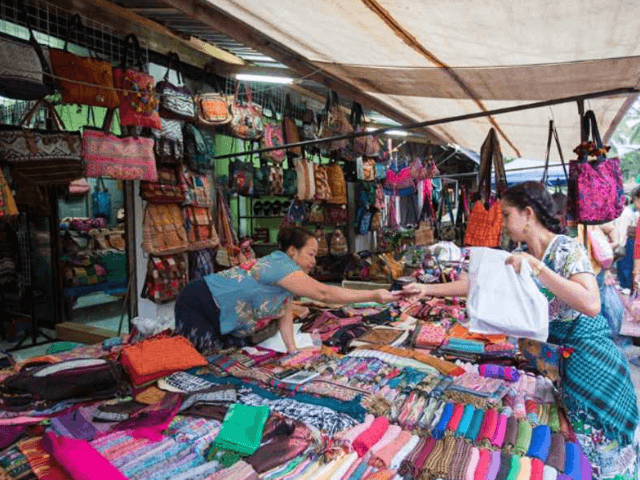Planning your first trip to Myanmar? This guide answers 20 essential questions travelers often ask — from safety and visas to the best time to visit, must-see places, local food, and cultural etiquette. Discover everything you need to know before you go, so you can explore Myanmar’s beauty with confidence.
TABLE OF CONTENTS
1
Is it safe to travel to Myanmar right now?
2
Do I need a visa to visit Myanmar?
3
What is the best time of year to visit Myanmar?
4
How many days should I spend in Myanmar?
5
What is the best way to get around Myanmar (bus, train, flights)?
6
What are the must-visit places in Myanmar?
7
Is Bagan worth visiting and how many days should I stay?
8
What can I do in Yangon?
9
What are the best things to do in Mandalay?
10
Is Inle Lake worth visiting?
11
What are the traditional foods of Myanmar I should try?
12
Where can I find the best street food in Yangon or Mandalay?
13
What cultural etiquette should I know when visiting Myanmar?
14
What is the history of pagodas and temples in Myanmar?
15
Are there any major festivals in Myanmar worth attending?
16
What are the best hotels in Yangon, Mandalay, and Bagan?
17
Is Myanmar a budget-friendly destination?
18
What currency is used in Myanmar and how do I exchange money?
19
Is internet and mobile connectivity good in Myanmar?
20
How much does a trip to Myanmar cost?
21
Have more questions?
Is it safe to travel to Myanmar right now?
Safety is always the number one concern. The truth is, Myanmar has gone through political changes, and some regions remain sensitive. That said, the country’s main travel destinations- Yangon, Bagan, Mandalay, Inle Lake, and Ngapali Beach- are still welcoming visitors and are considered safe. At Threeland Travel, we constantly monitor the situation on the ground. We work only with trusted local partners, select safe routes, and arrange professional guides so that you can focus on the beauty of Myanmar while we take care of your safety and comfort.
Do I need a visa to visit Myanmar?
Yes, most travelers will need a visa. The easiest option is the online e-visa, which is straightforward to apply for and normally grants 28 days of travel. Processing time is often just a few days. Threeland can assist you with the application or provide the latest updates on entry requirements so there are no surprises at the airport.
What is the best time of year to visit Myanmar?
The sweet spot is between November and February - the dry season, with warm days, cool evenings, and clear skies. This is when temple hopping in Bagan or boat rides on Inle Lake are most magical. March to May can be very hot (sometimes over 35°C), so it’s best for shorter stays or relaxing at Ngapali Beach. From June to October, the monsoon brings lush green scenery and fewer tourists, which some travelers love for the quiet atmosphere.
How many days should I spend in Myanmar?
We recommend at least 7 to 10 days if you want to experience Myanmar’s most iconic sights: Yangon’s Shwedagon Pagoda, Bagan’s temple plains, Mandalay’s cultural treasures, and Inle Lake’s floating gardens. Within two weeks or more, you can slow down and include places like Hpa-An (dramatic karst mountains), Kalaw (hill tribe treks), or Ngapali Beach (for pure relaxation). Threeland can help you strike the perfect balance between sightseeing and immersive cultural experiences.
What is the best way to get around Myanmar (bus, train, flights)?
Distances between cities are quite large, so domestic flights are the most convenient. Buses and private cars are great for shorter routes, while trains, though slower, offer a glimpse of local life and scenic countryside (like the famous Goteik Viaduct near Pyin Oo Lwin). At Threeland, we usually recommend combining flights for long distances with private transfers for comfort, ensuring that your travel days are smooth and enjoyable.
What are the must-visit places in Myanmar?
- Yangon - a vibrant city blending colonial heritage with Buddhist spirituality.
- Bagan - an ancient wonder where thousands of temples stretch across the plains.
- Mandalay - home to monasteries, traditional crafts, and the iconic U Bein Bridge.
- Inle Lake - known for its stilt-house villages, floating gardens, and leg-rowing fishermen.
- Ngapali Beach - pristine white sands and turquoise waters, perfect for unwinding.
Threeland tours often combine these highlights with authentic side trips to villages, caves, or mountain towns so you see both the iconic and the intimate.
Is Bagan worth visiting and how many days should I stay?
Without a doubt, Bagan is the heart of Myanmar travel. Imagine standing on a temple terrace as the morning mist rises, revealing thousands of golden spires glowing in the sunrise. That’s Bagan. We recommend 2 to 3 full days to explore by e-bike, horse cart, or even hot-air balloon. You’ll have time to see both the grand temples and the quieter, hidden pagodas where monks chant in the evening light.
What can I do in Yangon?
Yangon is more than just a gateway city. Start with the Shwedagon Pagoda, glowing with gold at sunset. Wander the downtown area with its colonial architecture and bustling street markets. Visit the Bogyoke Aung San Market for handicrafts and gems, then relax in a traditional tea shop where locals gather over steaming cups of sweet tea and plates of samosas. Yangon is also a food lover’s paradise, from street noodles to fine dining.
What are the best things to do in Mandalay?
Mandalay is Myanmar’s cultural soul. Don’t miss:
- Mandalay Hill for sunset views over the city.
- U Bein Bridge, the world’s longest teak bridge, especially atmospheric at dusk.
- Ancient capitals nearby like Amarapura, Sagaing, and Inwa.
- Workshops where artisans make gold leaf, marble Buddhas, and tapestries.
Spending 2-3 days here lets you dive deep into the traditions that still shape Myanmar today.
Is Inle Lake worth visiting?
Absolutely. Inle Lake is unlike anywhere else-fishermen rowing with their legs, floating gardens growing vegetables on the water, and local markets rotating among lakeside villages. Beyond the boat tours, you can visit weaving workshops, see silversmiths at work, or trek through nearby hill tribe villages. Two days is perfect to capture both the beauty and the rhythm of lake life.
What are the traditional foods of Myanmar I should try?
Myanmar’s cuisine is flavorful and varied. Try:
- Mohinga - rice noodles in a fragrant fish broth, often eaten for breakfast.
- Shan noodles - flat noodles with chicken or pork, simple but delicious.
- Tea leaf salad (laphet thoke) - fermented tea leaves mixed with crunchy beans, nuts, and garlic.
- Curry feasts - where a main curry is served with a dozen little side dishes.
Food tours with Threeland guides are a great way to taste safely and authentically.
Where can I find the best street food in Yangon or Mandalay?
In Yangon, head to 19th Street in Chinatown for grilled skewers, dumplings, and BBQ washed down with cold beer. Mandalay has lively night markets where you can sample mohinga, chapati, and sweet snacks. Our guides know which stalls are clean and popular with locals, so you can eat worry-free while tasting the real flavors of Myanmar.
What cultural etiquette should I know when visiting Myanmar?
Myanmar is deeply traditional. Some key points:
- Remove shoes and socks before entering pagodas or homes.
- Dress modestly, covering shoulders and knees.
- Avoid touching someone’s head-it’s considered sacred.
- Always use two hands when giving or receiving something.
- Be respectful when photographing monks-ask first.
Threeland guides always brief you before visits, so you’ll feel confident engaging with locals respectfully.
What is the history of pagodas and temples in Myanmar?
Pagodas are central to Myanmar’s identity. The country has been Buddhist for centuries, and kings built temples as acts of devotion and merit. The Bagan Kingdom (9th-13th century) created one of the world’s richest temple landscapes, much of which survives today. Temples are not just relics-they are living spiritual sites where people still pray, meditate, and celebrate festivals.
Are there any major festivals in Myanmar worth attending?
Yes! Festivals here are lively and colorful:
- Thingyan (Water Festival, April) - Myanmar’s New Year, with joyful water-splashing celebrations.
- Thadingyut (Festival of Lights, October) - streets and temples sparkle with lanterns.
- Tazaungdaing (November) - celebrated with hot-air balloon releases and robe offerings to monks.
Traveling during a festival with Threeland gives you a chance to join in respectfully and see the country at its most vibrant.
What are the best hotels in Yangon, Mandalay, and Bagan?
- Yangon - The Strand (luxury colonial), Savoy Hotel (boutique charm), modern city hotels.
- Mandalay - Hilton Mandalay, boutique riverside hotels with great views.
- Bagan - Aureum Palace (luxury), Bagan Lodge (chic resort), and many cozy mid-range stays.
We partner only with trusted hotels, from 5-star to boutique, depending on your comfort and budget.
Is Myanmar a budget-friendly destination?
Yes, Myanmar is very affordable. Street food and local guesthouses are budget-friendly, while mid-range hotels and guided tours are excellent value. Even luxury experiences-like balloon rides over Bagan-are relatively more accessible compared to neighboring countries.
What currency is used in Myanmar and how do I exchange money?
The local currency is the Myanmar Kyat (MMK). US dollars are widely accepted in hotels and some tourist services, but you’ll need kyat for markets and small shops. Exchange at banks, licensed counters, or use ATMs in larger cities. Threeland can also guide you on where to exchange safely and at fair rates.
Is internet and mobile connectivity good in Myanmar?
Connectivity has improved, but expect slower Wi-Fi than in Thailand or Vietnam. Hotels and cafes usually provide free Wi-Fi. For smoother browsing and maps, buy a local SIM card from providers like MPT or Ooredoo upon arrival.
How much does a trip to Myanmar cost?
It depends on your style of travel. Budget travelers can get by with $30-40/day. Mid-range travelers average $60-100/day. Guided tours with Threeland, including comfortable hotels, transfers, and unique experiences, can be customized to fit your budget while making sure you enjoy the best of Myanmar stress-free.
Have more questions?
If you have any other questions about traveling in Myanmar- or want us to design a personalized itinerary - just ask Threeland Travel. We’re here to make your journey smooth, meaningful, and full of unforgettable memories.















